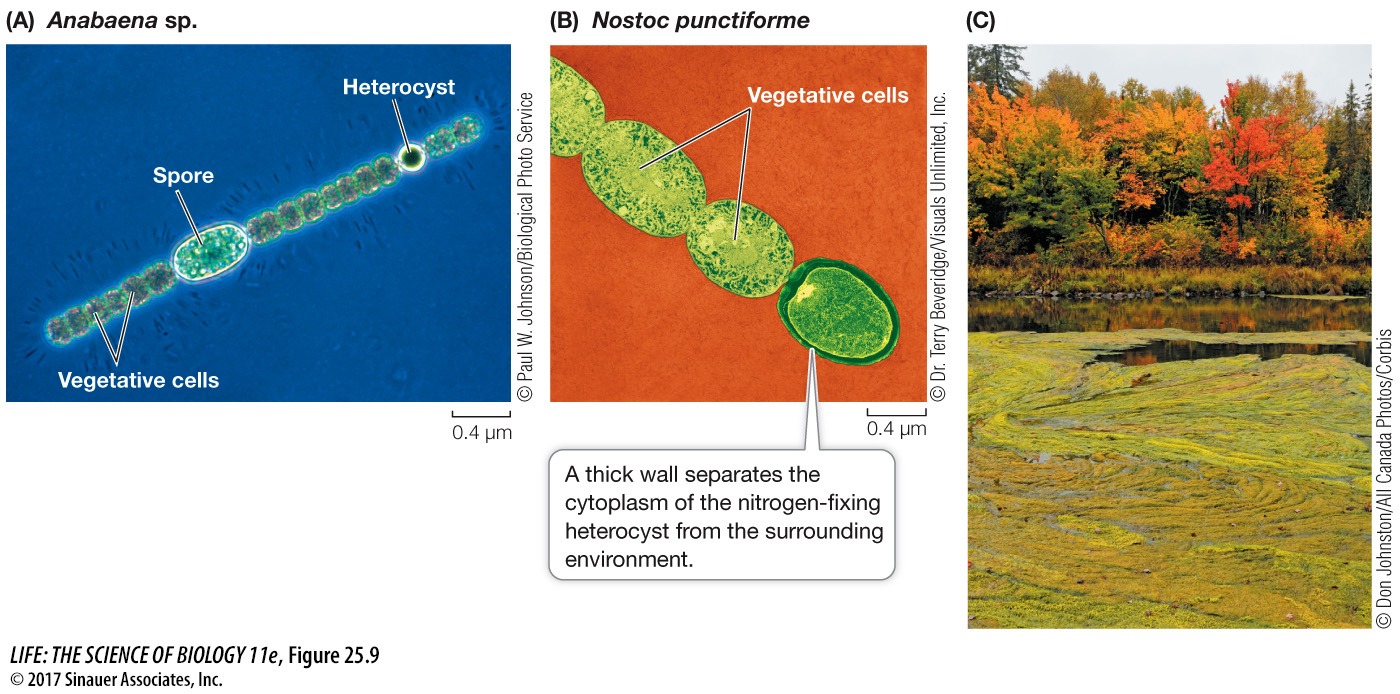Cyanobacteria were the first photosynthesizers
Cyanobacteria, sometimes called blue-
Cyanobacteria carry out the same type of photosynthesis that is characteristic of eukaryotic photosynthesizers. They contain elaborate and highly organized internal membrane systems called photosynthetic lamellae. As mentioned in Key Concept 25.1, the chloroplasts of photosynthetic eukaryotes are derived from an endosymbiotic cyanobacterium.
Cyanobacteria may live free as single cells or associate in multicellular colonies. Depending on the species and on growth conditions, these colonies may range from flat sheets one cell thick to filaments to spherical balls of cells. Some filamentous colonies of cyanobacteria differentiate into three specialized cell types: vegetative cells, spores, and heterocysts (Figure 25.9). Vegetative cells photosynthesize, spores are resting stages that can survive harsh environmental conditions and eventually develop into new filaments, and heterocysts are cells specialized for nitrogen fixation. All of the known cyanobacteria with heterocysts fix nitrogen. Heterocysts also have a role in reproduction: when filaments break apart to reproduce, the heterocyst may serve as a breaking point.

Media Clip 25.1 Cyanobacteria